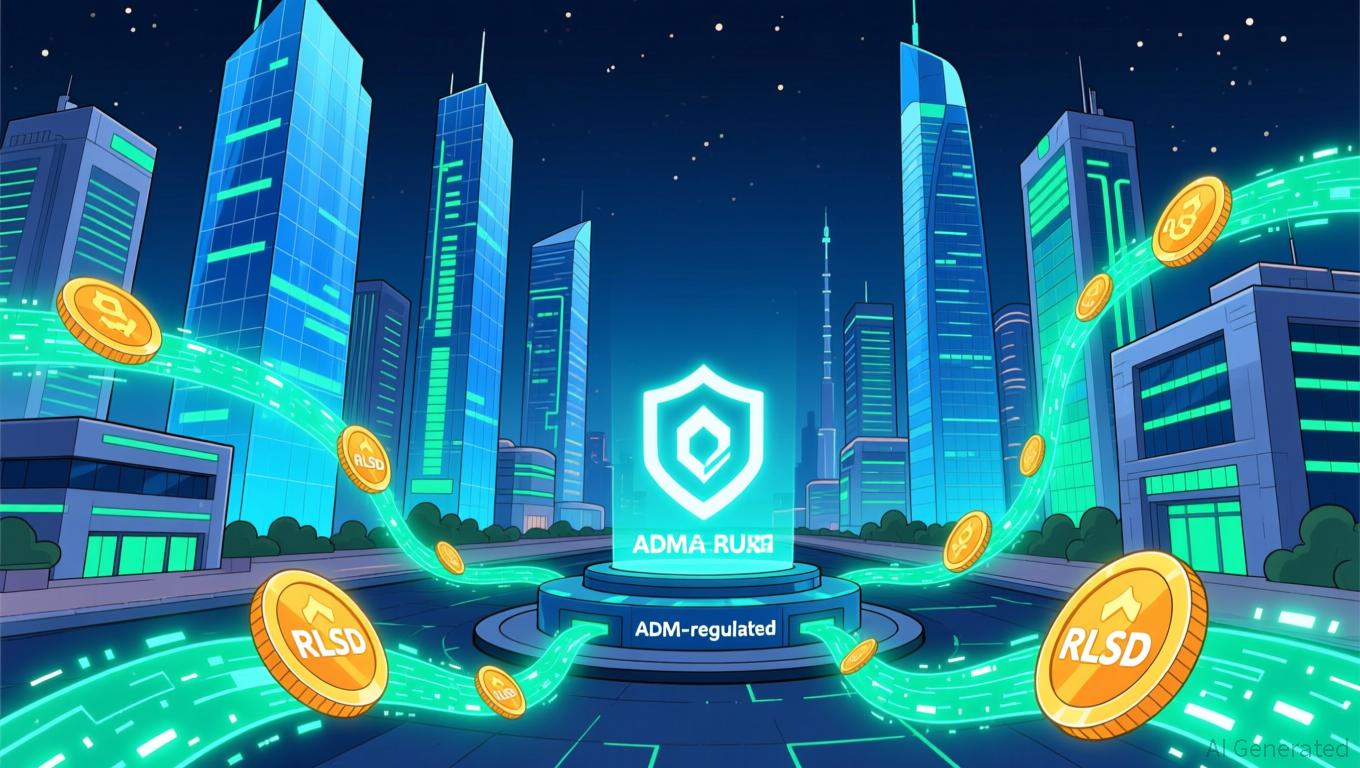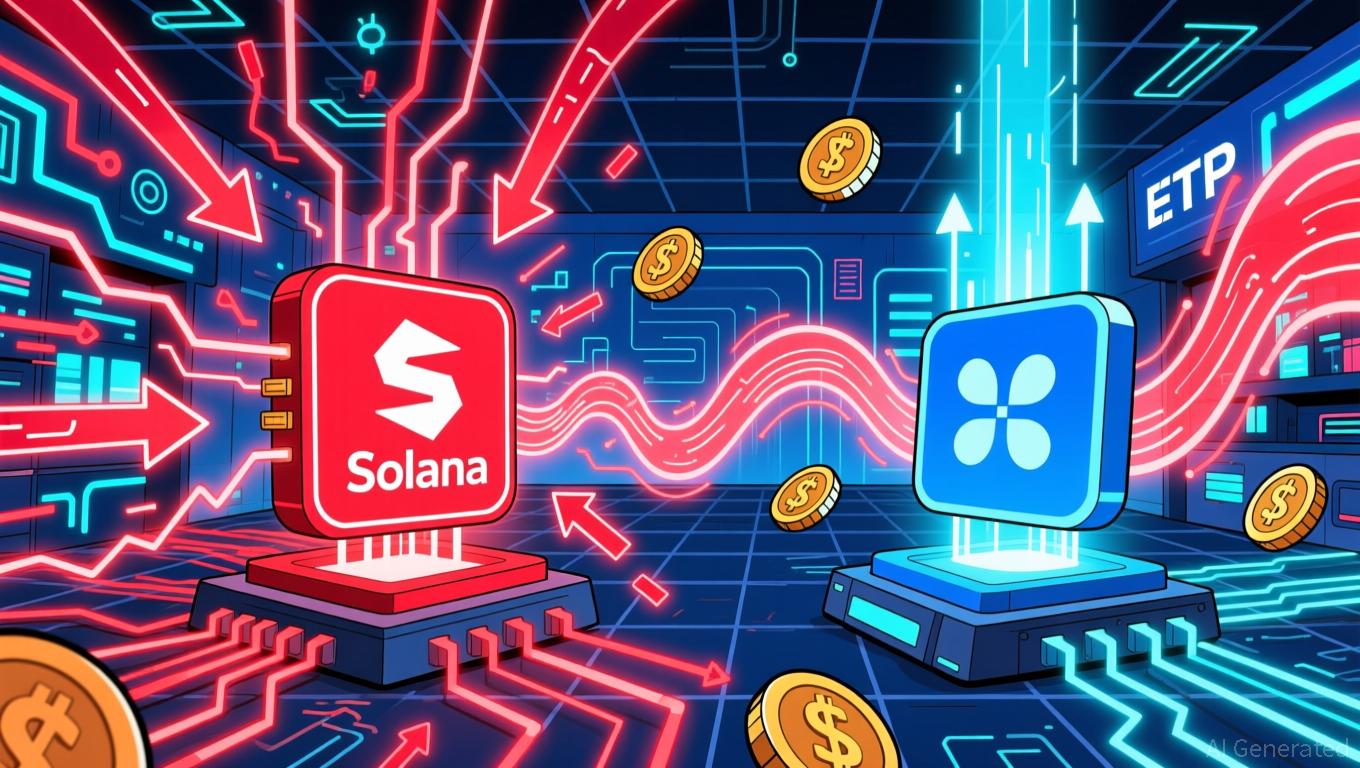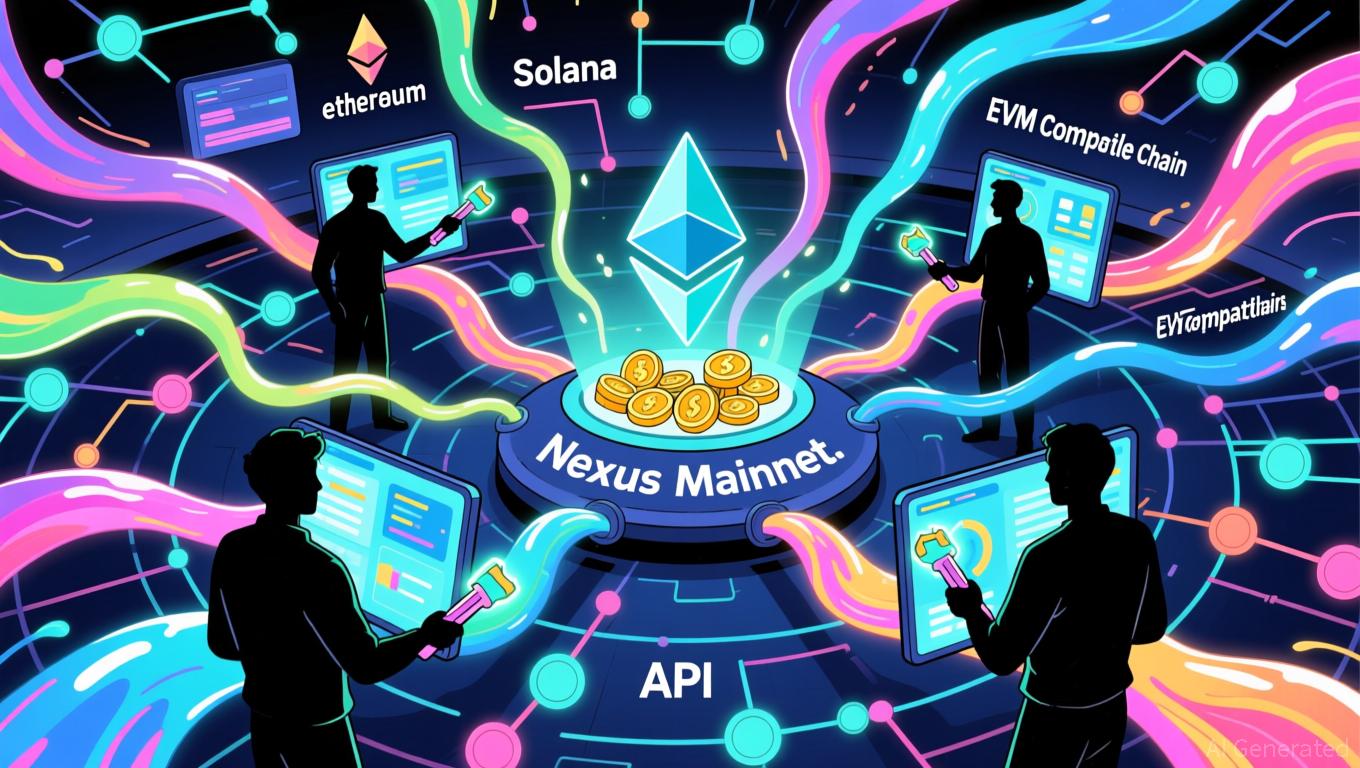XRP News Today: ADGM's Green Light Boosts RLUSD as a Link Between the U.S. and Middle East
- Ripple's RLUSD stablecoin gains ADGM approval as UAE's first regulated fiat-referenced token, enabling institutional use in payments and collateral management. - With $1.2B market cap and 80% supply on Ethereum , RLUSD's adoption accelerates through transparent reserves and NYDFS compliance, bridging U.S.-Middle East markets. - ADGM's stringent framework attracts major institutions, positioning RLUSD as infrastructure-grade asset with 1:1 USD backing and third-party attestations. - Ripple expands regiona
Ripple’s RLUSD Stablecoin Gains Regulatory Approval in Abu Dhabi
Ripple’s RLUSD stablecoin has achieved a major regulatory milestone in the United Arab Emirates, as the Abu Dhabi Global Market (ADGM) has officially recognized it as an Accepted Fiat-Referenced Token. The Financial Services Regulatory Authority (FSRA) of ADGM has granted this approval, allowing authorized institutions to utilize RLUSD for regulated purposes such as payments and collateral management within the region.
This development marks Ripple’s entry into one of the world’s most strictly regulated cryptocurrency centers, furthering its goal to establish RLUSD as a compliant settlement solution throughout the Middle East.
Introduced in late 2024 under a New York DFS trust charter, RLUSD has rapidly expanded to a market cap of over $1.2 billion. This growth is fueled by institutional interest in a transparent, dollar-backed stablecoin with clear reserve and redemption policies.
RLUSD’s use in essential financial services is on the rise, with 80% of its circulating supply now operating on the Ethereum blockchain. The ADGM’s endorsement supports Ripple’s broader initiative to create regulatory connections between the U.S. and Middle Eastern markets, leveraging its New York compliance to streamline cross-border dollar transactions.

ADGM’s reputation for rigorous digital asset regulations continues to attract major financial institutions, including Zand Bank and Mamo. Jack McDonald, Ripple’s Senior Vice President, highlighted that RLUSD’s growing use in payments and collateral is establishing it as a preferred USD stablecoin among large institutions. Analysts predict this momentum could soon place RLUSD among the top five stablecoins by market capitalization.
The regulatory clarity provided by ADGM positions RLUSD as a core infrastructure asset, rather than a speculative investment—an important distinction for enterprise adoption. RLUSD’s full USD backing, independent attestations, and segregated reserves meet the stringent requirements set by ADGM and other international regulators.
This regulatory progress supports Ripple’s vision to embed RLUSD within its cross-border payment offerings, such as Ripple Prime and crypto on-ramp solutions.
Ripple’s expansion in the Middle East continues, with recent partnerships in Bahrain and Africa, and regulatory approvals from Dubai’s DFSA earlier in 2025. With nearly 3,000 licensed entities in ADGM, this approval provides a robust foundation for RLUSD’s broader adoption, potentially enhancing its role in capital markets and treasury operations.
While RLUSD’s strong presence on Ethereum has prompted discussion about Ripple’s focus compared to its native XRP Ledger (XRPL), institutional adoption remains strong. In November 2025 alone, over 100 million RLUSD were issued on XRPL, demonstrating sustained demand for cross-border settlement solutions.
Reece Merrick, Ripple’s Managing Director for the Middle East, emphasized that the UAE’s regulatory leadership has positioned ADGM as a global standard-setter for digital asset innovation. This approval further validates RLUSD’s compliance and sets the stage for deeper regional integration, with Ripple planning to work closely with partners to expand its digital finance ecosystem.
Disclaimer: The content of this article solely reflects the author's opinion and does not represent the platform in any capacity. This article is not intended to serve as a reference for making investment decisions.
You may also like
Ethereum News Update: Amundi’s Integrated Approach Connects Blockchain with Conventional Financial Regulations
- Amundi, Europe's largest asset manager, launched its first Ethereum-based tokenized money-market fund, enabling 24/7 settlements and transparent record-keeping via blockchain. - The hybrid model, developed with CACEIS, combines traditional fund operations with blockchain-based ownership, preserving regulatory compliance while expanding investor access. - Ethereum's dominance in stablecoin and RWA transfers ($105.94B in 30 days) underscores its role in accelerating tokenization, with Amundi positioning it

XRP News Today: XRP ETFs Drive Price Increases, While Solana ETFs Ease Selling Pressure
- XRP ETFs raised $587M in inflows since late November, outpacing Solana's $568M as investors favor altcoins with regulatory clarity and utility. - Bitwise XRP ETF's $107M debut and zero-fee strategy drove momentum, while Solana ETFs faced $156M weekly outflows due to network reliability concerns. - XRP's inflows acted as a "battering ram" pushing prices above $2.27, contrasting Solana's ETFs which merely dampened sell pressure without reversing its decline. - Analysts predict XRP could reach $3 by Decembe

The Federal Reserve's Change in Policy and Its Impact on Alternative Cryptocurrencies Such as Solana
- Fed's 2025 policy shifts, including rate cuts and stablecoin regulations, are reshaping altcoin markets by altering liquidity and risk appetite. - Solana's Alpenglow upgrade (150ms finality, 1M TPS) addresses scalability issues, aligning with Fed's AI-driven infrastructure focus despite network reliability concerns. - Institutional inflows into Solana ETFs ($100M AUM) contrast with retail caution (78% HODLers in red), highlighting divergent risk perceptions amid 30% price corrections. - Divergent ETF flo

Avail's Intent-Driven Nexus Addresses the Issue of Fragmented Liquidity Across Chains
- Avail launches Nexus Mainnet, a cross-chain solution unifying liquidity across Ethereum , Solana , and EVM networks. - The intent-solver model enables seamless asset transfers without technical complexities, streamlining user experiences. - Developers gain modular tools for multichain integration, reducing costs as cross-chain liquidity demand grows. - Nexus abstracts execution layers, offering unified balances and execution while addressing fragmentation challenges. - With $50B+ in cross-chain activity
